Complete Training System For DCS Fundamentals and Programming
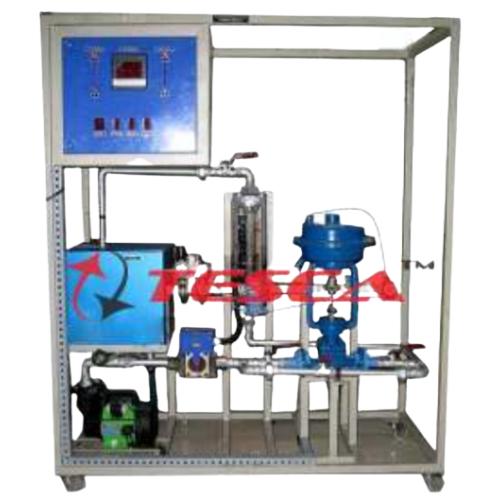
Order Code: 22235521.2.21
Category: General Lab Equipment I
The Distributed Control System (DCS) trainer is a complete training solution that combines the operations of a leading commercial DCS process management controller package, namely the Emerson Delta V, with an assortment of our proprietary training ri...
SPECIFICATION
The Distributed Control System (DCS) trainer is a complete training solution that combines the operations of a leading commercial DCS process management controller package, namely the Emerson Delta V, with an assortment of our proprietary training rigs.
The training rigs offer a range of processes:
- Level & Flow
- Temperature
- Pressure
- Forced Air Cooling
These may be operated separately or combined to produce a multi-process, multi-loop system. The trainer is supplied complete with the PC, software, controller and I/O modules that are needed to monitor and control the process rigs. A control cabinet houses the components that provide the interface between the PC and the rigs. The control cabinet is easily connected to the PC and rigs using the supplied cables. The valves, transducers and transmitters associated with the training equipment are standard industrial components that operate using simple 4–20 mA current loop control, and 24 V d.c. The trainer can be used to perform a set of operations that will guide the student from the basics of field components in the process industry to the final control algorithms that are used in various applications. The features and curriculum coverage highlighted below are specific to the DCS as a whole and in addition to those covered by the individual units.
Curriculum Coverage:
- Distributed control system background theory
- Delta V Explorer
- Trainer configuration
- Basic on-off control
- Advanced on-off control
- Levels & alarms
- Sequential function charts
- PID control
- Shutting down the workstation
Features:
- Windows-based workstation
- Includes a PC with speakers to provide graphical and audible alarms
- Provides a graphical user interface
- Includes an Emerson Delta V industrial controller
- Continuous & sequential control of processes
- Industry standard 4-20 mA signals with 24 V DC outputs
- 16 analogue & 8 digital inputs
- 8 analogue & 8 digital outputs
- Displays graphical representations of the trainers and processes to simulate an industrial environment
- „Design“ & „Run“ modes
- Controller & interface package housed in a 19 inch rack
- Software provides an integrated SCADA environment with I/O tags held in a database
- Comprehensive experiment manual
The experiment must be complete, with all necessary hardware, software, experimental and device manuals and accessories to perform the experiments.
The experiment set must have a manual accessible via QR Code through an online portal for the management of experiments and devices that allows overview of the total inventory of the educational resource collection, e.g. with number, article name, inventory number, storage location; overview of all experiments possible with the collection of educational materials or a special device; installation and management of the individual storage structure such as premises, cabinets, shelves and trays, also with deposited images; inventory of the complete teaching material collection with indication of the storage location; inventory of device sets, which in turn consist of several individual devices; inventory also using internal school inventory numbers or with individual barcodes, also for distinguishing identically constructed devices. Inventory also indicating the availability of a device, e.g. available, borrowed, defective; generation of individual barcodes for label printing; support of standard barcode scanners, tablets and smartphones for automated access to devices; administration also of own articles or articles of foreign manufacturers, including description, pictures, documents, media and comments; import of existing inventory lists; access to instruction sheets, experiment descriptions, safety data sheets and other media - expandable with your own documents; creation and documentation of own experiments with corresponding hints, pictures and comments; creation and export of inventory lists with indication of number, article name, storage location, status, inventory numbers and comments, e.g. in Excel or LibreOffice; creation and export of experiment lists, which are feasible with the collection of teaching aids taking into account the availability of the individual devices, e.g. in Excel or LibreOffice; creation of the device lists of an experiment with the indication of number, article description and storage location, e.g. as PDF for printout; creation of an up-to-date list of hazardous substances with designation, danger symbols and storage location of the hazardous substance.
Each system must be composed minimally by the following components:
1x Level/Flor and Temperature Control Rig
The combined PROCON Level, Flow & Temperature Process Control System is self-contained and has all of the features of the individual Level & Flow and Temperature systems plus remote set-point control. Remote set-point control can be affected with the PROCON Level, Flow & Temperature Process Control System by using two process controllers. The 4-20mA analogue remote set-point input allows various forms of cascade control to be implemented between linked or interactive control loops. The process set-point can be local and remote or dual, selected from the front panel, or in response to a logic input. When dual set-point is selected the function can be ratio or bias action. A Programmable Logic Controller (PLC) 38-350 is also available separately. It can be used with the Process Interface 38-200 to provide an alternative control method with on/off elements to the standard Process Controller 38-300 (included).
Curriculum Coverage:
- Flow & level familiarisation & calibration
- Temperature familiarisation & calibration
- Interface familiarisation & calibration
- Controller familiarisation & calibration
- Float level transmitter
- Pulse flow transmitter
- On-Off control
- Temperature process control
- Complex control loops
- Dual loop (process) control - using Level, Flow & Temperature Control Trainers
- Remote set-point control
- Set-point ratio control (dual loop)
- Cascade control (temperature & flow)
- Feedforward Control
Features:
- Study of P, PI and PID control of level & flow
- Tuning PID controllers
- Advanced process control
- Study of P, PI and PID control of temperature & flow
- Manual flow control
- Comprehensive experiment manual
Technical Data:
- For operation with 110 V or 120 V 50/60 Hz supplies
- 3 phase supply is required so nominal 220 volts are available across 2 phases
- Dimensions (net): overall width 2010 mm x depth 400 mm x height 710 mm
- Weight: gross 142 kgs, net 97 kgs
Process Interface
The Process Interface is connected to the system and provides all necessary power outlets for the Process Trainer, sensors and Process Controller. It accepts up to four 4-20 mA transmitter signal inputs and allows signal patching so that different control schemes can be quickly configured. It also provides a 4-20 mA current source, two current to voltage converters and a voltage comparator with adjustable hysteresis which can be used to provide a simple 2-state control loop in addition to the main controller loop. Protection is provided by a residual current circuit breaker.
Process Controller:
The ABB Industrial Process Controller contained within the Process Controller is microprocessor based and is easily con- figured by the user to provide a range of control functions from 2-state control to 3-term PID control. It also features local or remote set-point, re-transmission of set-point or process variable, 4 logic inputs, 4 relay outputs, ramp/soak (profile sequencing) and an autotune facility which can analyse the requirements of a process and configure the control parameters for optimum performance. Together with the Process Interface, it provides a simple and convenient means of controlling the system.
1x Forced Air Cooling
The Forced Air Cooler is optional equipment for extending the range of experimentation when used with the Temperature Process Control Trainer or between that unit and the Level & Flow Process Control Trainer in the to maintain a constant fluid input temperature. The Forced Air Cooler extends the operating temperature of the Temperature Control Rig and allows direct control of its operating characteristics. It consists of an electric pump, a fan and radiator unit to cool the circulating water. The unit may be initially charged through the header tank which should be maintained “topped-up” to avoid the ingress of air. There are two signals which may be applied for controlling the degree of cooling. The speed of the fan may be controlled by submitting a 4-20 mA current into the top DIN socket of the control section. The speed of the pump may be similarly varied by inputting a 4-20 mA signal through the separate adjacent DIN socket. The speed of the pump and fan are then controlled via phase controlled circuitry taking as it‘s input the 4-20 mA signal. Alternatively, the fan and the pump may be set to continuous for full speed operation. The optional accessory is the 38-481 water pressure regulator.
Curriculum Coverage:
- Familiarisation of the equipment
- Use as a manually controlled cooler
- Temperature control by varying fan speed
- Temperature control by varying pump speed
- Temperature control by varying secondary flow
Features:
- Maintains constant temperature for fluid input
- Enables quick response times in temperature reduction
- Variable speed fan
- Variable speed pump
- Comprehensive experiment manual
Technical Data:
- 4-20 mA signals
- Dimensions (net): 800 mm width x 380 mm depth x 705 mm height
- Weight: gross 40 Kg, net 25 Kg
1x Pressure Control Rig
The Pressure Process Control Training System is a single loop pneumatic control system. It enables the study of the principles of both pressure regulation of a process and the control of flow in a pressurised system. The system comprises a low pressure air circuit supported on a bench-mounted panel, making it suitable for individual student work or for group demonstration. The trainer requires a compressed air supply at a recommended input pressure of 40 psi (not supplied). An input filter/drier is used to clean the supplied air.
Separately regulated branches provide air for the process and for valve control. The process branch comprises a regulator, a variable area flow meter, a pneumatically operated control valve, an orifice block with changeable orifice plates and both differential and point of measure pressure sensors. The process air flow can be discharged to atmosphere via adjustable diffused outlets. An air receiver tank can be switched in and out of the circuit. The valve control branch comprises a regulator and an electrically operated current to pressure input converter. This is used to regulate the pneumatic control valve in the process line. The input converter operates from a 4-20 mA signal. Signal conditioning for the sensors is provided by pressure transmitters. The Differential Pressure Transmitter gives a linear differential pressure sensor output. The system is fully equipped with pressure gauges to indicate the pressures around the system.
Curriculum Coverage:
- Pressure safety, familiarisation & calibration
- I/P converter & pneumatic control valve operation
- Controller familiarisation & calibration
- Automatic control systems
- Serial communication
- Pressure sensor
- Transmitter & I/P converter - linearity & hysteresis
- Pneumatic control valve
- Characteristics at different pressure ranges
- System response & air receiver
- Principles of proportioning valve & proportional process control
- Study of P, PI and PID control of pressure
- Calibration of the differential pressure sensor & transmitter
- Flow control in the process rig
Features:
- Safe, low pressure operation
- Fully gauged for pressure & flow rate
- Differential & Gauge pressure sensors
- Current controlled (4-20 mA) pneumatically operated control valve
- Standard industrial components
- Self-sealing outlets for the manometer
- Safety valves fitted as standard
- Air used as the process fluid
- Comprehensive experiment manual
Technical Data:
- 4-20 mA operation
- Dimensions (net): width 900 mm x depth 460 mm x height 720 mm
- Weight: gross 110 kg, net 72 kg
1x Software + PROCON Course Software
The teaching content is provided within the software; this includes the underlying theory, written so that it does not make extensive use of mathematics. An important part of the content is to highlight the assignment learning objectives and to convey relevant background to the student. Consequently, the student is well prepared for the practical work using the hardware, and can put the results into perspective. operates so that its appearance and the range of instrumentation depend on the context. So, for example, if the practical-work requires the use of complex instrumentation such a constellation or a phase meter, one is made available, whereas at lower levels of study it would not be provided. Test instruments are initialised with settings suitable for the required measurements, but students are often expected to change them during the practical work. The instruments have cursors to make measurements and their displays may be printed or exported for inclusion in laboratory reports.
The Software Package now includes Tools. This allows teachers and lecturers full edit facilities with the creation of new content and additional assignments. Laboratory Architect determines the range of assignments available to the students and to configure the look and feel of the environment. Assignment Builder creates new or edits existing laboratory assignments and configures the test equipment. Content is edited using any HTML editor or Microsoft Word. Winwiz creates and edits work board "patching" diagrams. It also configures test equipment monitor points and "further information" points on the practical diagrams. Practical diagrams are edited by Microsoft Visio. (Visio is not supplied as part of ) Manual Builder creates a version of the content ready formatted for printing. Free of charge online software updates are included. An optional addition is 93-410 Course Manager, although it is not necessary for equipment operation. The 93-410 creates complete courses containing assignments from any of the installed products plus external resources such as documents, multimedia material, thrid party programs, web urls, or locations on local intranets. Includes Course Designer and Course Presenter.
Features:
- Now includes Tools
- Allows teachers & lecturers full edit facilities
- New content & additional assignments
- Free of charge online software updates
- Hands off for teachers, hand on for students
- Self-paced
- Unrestricted, open learning environment
- Practical demonstration of theory & concepts
- Interactive patching diagrams
- Real-time embedded instrumentation
- Automatic instrumentation configuration
- Data export for analysis
- USB connection to hardware
- Editing tools include laboratory architect, assignment builder, Winwiz & manual builder
- Compatible with 32 bit & 64 bit versions of Windows XP, Vista, Windows 7 & Windows 8
- Optional 93-410 Course Manager
- The DCS learning environment provides:
- Background theory
- An introduction to DeltaV
- General instructions on how to operate the system
- Objectives for each assignment
- Practicals (hands-on experience) within each assignment
- Suggestions for conducting experiments
- A graphical user interface
- 1x Air Compressor
- Suitable to work with the pressure control system

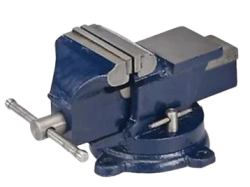
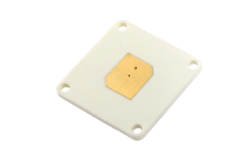
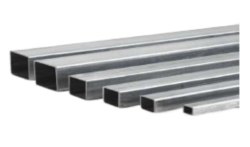
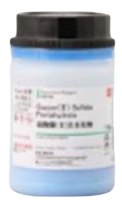
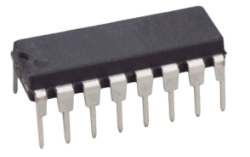
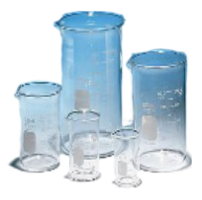
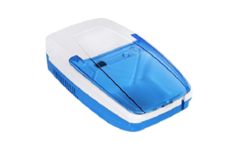
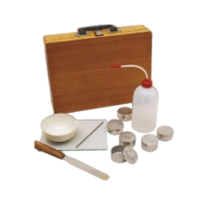
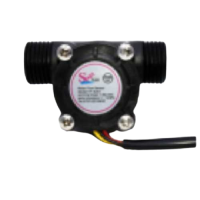

 91-9829132777
91-9829132777